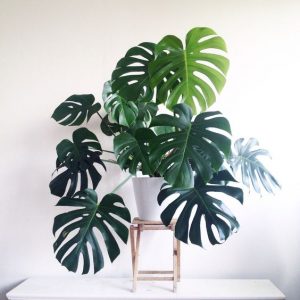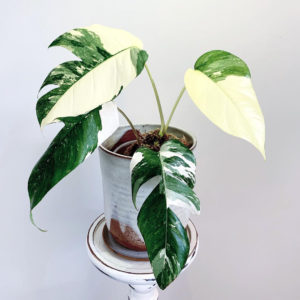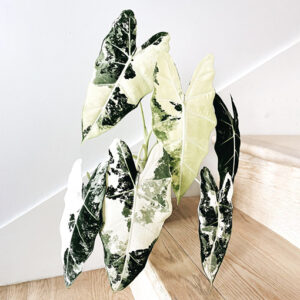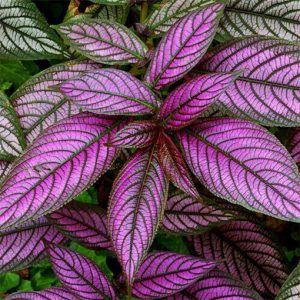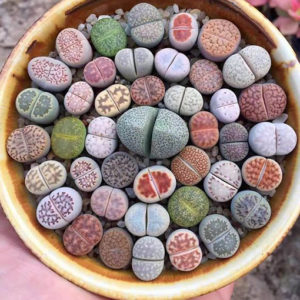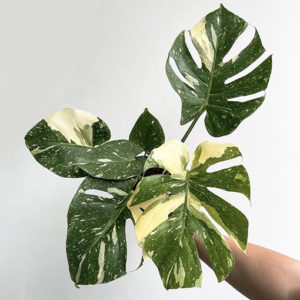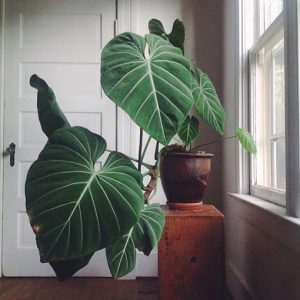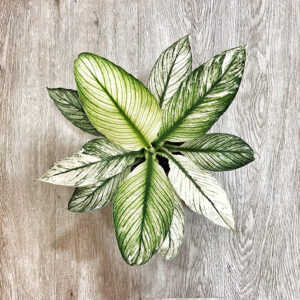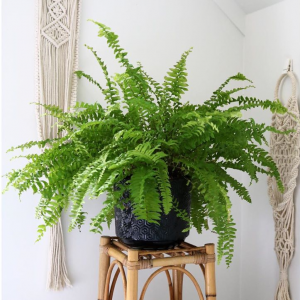
#Thejunglecollective!
Boston Ivy, scientifically known as Parthenocissus tricuspidata, is a versatile and visually appealing climbing plant often used in landscaping for its striking appearance and ease of growth. This deciduous vine, a member of the grape family, is native to Japan and has become a popular choice for adorning walls, fences, and buildings, particularly in urban and garden settings. Known for its glossy dark green leaves that turn bright red in the fall, Boston Ivy provides a seasonal spectacle that enhances any landscape.
Characteristics of Boston Ivy
Boston Ivy is characterized by its glossy, dark green leaves, which are three-lobed and turn vibrant shades of red and purple in the fall, creating a stunning visual display. Unlike its relative, Virginia creeper, which has five-lobed leaves, Boston Ivy’s leaves are more uniform in shape. The vine is capable of growing up to 50 feet in height, making it an excellent choice for covering large surfaces.
This plant attaches itself to surfaces using small, adhesive pads called holdfasts, which are different from the damaging aerial roots of other climbing plants like English Ivy (Hedera helix). These holdfasts allow Boston Ivy to cling to walls and fences without causing structural damage, a significant advantage for preserving the integrity of buildings.
Ideal Growing Conditions
Boston Ivy thrives in a variety of conditions but prefers well-drained soil and partial to full sunlight. While it can tolerate shade, the vine will produce fewer leaves and its fall color may not be as vibrant. It is hardy in USDA zones 4 through 8, making it suitable for many regions across the United States.
To plant Boston Ivy, choose a location where the vine can climb and spread. South and west-facing walls are ideal as they receive ample sunlight, promoting vigorous growth and brilliant fall color. However, avoid planting Boston Ivy on walls with delicate surfaces, as the holdfasts can leave marks when removed.
Planting and Maintenance
Planting Boston Ivy
- Preparation: Begin by preparing the soil, ensuring it is loose and well-drained. Amend the soil with compost if necessary to improve fertility and drainage.
- Spacing: Space the plants about 12 to 18 inches apart to allow for adequate growth and coverage.
- Watering: Water the plants thoroughly after planting and maintain consistent moisture, especially during the first growing season to establish strong roots.
Maintenance
- Pruning: Regular pruning is essential to control the growth of Boston Ivy and to maintain a neat appearance. Prune in late winter or early spring before new growth begins. Remove any dead or damaged vines and trim back excessive growth to encourage a fuller, healthier plant.
- Feeding: Fertilize in early spring with a balanced, slow-release fertilizer to support vigorous growth.
- Watering: Although Boston Ivy is drought-tolerant once established, it benefits from regular watering during dry periods, particularly in hot summer months.
Landscaping Applications
Boston Ivy is a versatile plant that can be used in various landscaping scenarios:
Wall and Fence Coverings
Boston Ivy is perhaps best known for its ability to cover walls and fences, creating a lush, green backdrop that can transform the appearance of a property. The vine’s ability to cling to surfaces without structural damage makes it ideal for both old and new buildings.
Ground Cover
In addition to vertical surfaces, Boston Ivy can be used as a ground cover. Its dense foliage helps to suppress weeds and stabilize soil on slopes, preventing erosion.
Pergolas and Arbors
Train Boston Ivy to grow over pergolas and arbors to create a shaded, green retreat. The dense foliage provides excellent coverage, and the fall color adds seasonal interest.
Garden Accents
Use Boston Ivy to accentuate garden features such as trellises, pillars, and gazebos. Its rapid growth and lush appearance make it a valuable addition to any garden design.
Seasonal Interest
One of the most appealing aspects of Boston Ivy is its seasonal transformation. In spring and summer, the plant’s glossy dark green leaves provide a vibrant backdrop. As the days shorten and temperatures drop in the fall, the leaves transition to brilliant shades of red, orange, and purple, creating a stunning display that rivals the best autumn foliage.
This seasonal color change makes Boston Ivy an excellent choice for gardeners looking to add dynamic visual interest to their landscapes. The bright fall colors can complement other autumnal plants and provide a striking contrast against evergreen shrubs and trees.
Boston Ivy vs. English Ivy
While both Boston Ivy and English Ivy (Hedera helix) are popular climbing plants, they have distinct differences:
- Attachment: Boston Ivy uses holdfasts to attach to surfaces, whereas English Ivy uses aerial roots that can penetrate and damage masonry and wood.
- Fall Color: Boston Ivy is known for its spectacular fall color, while English Ivy remains green year-round.
- Growth Habit: Boston Ivy is deciduous, shedding its leaves in the fall, whereas English Ivy is evergreen, providing year-round foliage.
Due to these differences, Boston Ivy is often preferred for applications where fall color is desired and where the preservation of structural integrity is important.
Boston Ivy vs. English Ivy
Although Boston Ivy is generally low-maintenance, it can encounter a few issues:
- Pests: Aphids, scale insects, and spider mites can occasionally infest Boston Ivy. Treat infestations with insecticidal soap or horticultural oil, and ensure good air circulation to prevent outbreaks.
- Diseases: Fungal diseases such as powdery mildew and leaf spot can affect Boston Ivy. To prevent these diseases, avoid overhead watering and ensure the plant has good air circulation. Fungicidal treatments can be applied if necessary.
- Invasive Growth: Boston Ivy can grow aggressively, sometimes spreading beyond desired areas. Regular pruning and monitoring can help keep its growth in check. Use barriers or edging to contain its spread if used as a ground cover.
Boston Ivy is a versatile and attractive choice for any landscape, offering year-round interest with its lush green leaves and spectacular fall colors. Whether used to cover walls and fences, as ground cover, or to enhance garden structures, Boston Ivy brings a touch of natural beauty and elegance. With proper planting, maintenance, and care, this hardy vine can transform your garden into a verdant paradise.
Incorporating Boston Ivy into your landscaping plans not only adds aesthetic value but also contributes to the overall health and vibrancy of your garden environment. By understanding its characteristics and growth habits, you can harness the full potential of this remarkable plant, creating a landscape that is both beautiful and enduring.
If you want more information about caring for indoor and outdoor plants, check out our shop for a wide selection of both plants and planters.







